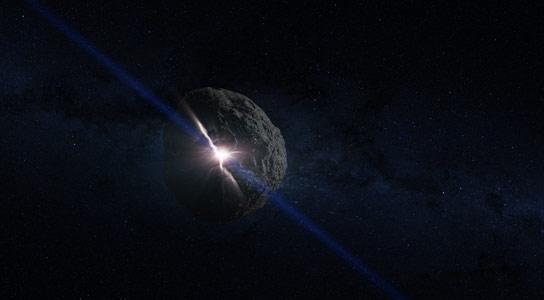

See? We must learn more about asteroids if want to have the ability to prevent them from hitting us. That hot gas expands rapidly, pushing on the remaining asteroid like a rocket engine, moving into a (hopefully!) safer orbit. The purpose of the nuke is to flash heat the surface, which vaporizes the rock there. Not to blow it up that's a bad idea (now instead of one rock to deal with you may have thousands of somewhat radioactive smaller ones). Hitting it with a space probe, for example, won't work well because instead of moving the asteroid onto a different path, the energy of impact is absorbed by the rocks themselves, moving them around and jostling them together.Īnother option - detonating a nuclear weapon near an asteroid - might be a better solution. They are extremely porous, and that changes what we might have to do to move them should we find one on an impact trajectory. You might think of an asteroid as a single monolithic object, but it has become clear that many smaller ones are in fact bags of rocks. Credit: NASA/Goddard/University of Arizonaįor example: Bennu is what we call a rubble pile, a collection of rocks held together by their own gravity. It’s nearly 19 meters long, almost the length of tennis court. There may come a day we'll need to do something about them.Ī long rock (center), possibly the remnants of a shattered, even bigger boulder, lies on the surface of the asteroid Bennu. We still need to keep watching the skies, map out the locations of any PHAs out there, and make sure we understand their orbits and behavior. So again, this is good the two most likely impactors we know of out there are still a pretty remote threat. It gets better: Even though the chance of an impact is extremely low, it's considered the most dangerous rock out there, tied with (29075) 1950 DA, a 1.1-km-wide asteroid that also poses a pretty small impact risk. That's a very small chance, and one I'm not worried over. Overall, the odds of an impact between now and the year 2300 are about 1 in 1,750 (~0.06%), so again this is a good thing.

They found it will pass pretty close to Earth in 2182, and - due to there still being very small uncertainties in the orbit - while they cannot rule out an impact at that date at the 100% level, the odds of it hitting us are a mere 1 in 2,700, which are quite long. With all these data in hand from the in situ measurements, the scientists extrapolated Bennu's orbit into the future. The scientists who looked into the OSIRIS-REx data on Bennu's orbit even looked into whether jamming the spacecraft into the asteroid's surface to get a sample may have changed its trajectory (but, confirming earlier results, they found the effect negligible).

Not only that, but Bennu is spitting rocks in to space (for reasons that are still not clear) and that acts like a very low rocket thrust, changing its orbit. There's a subtle force called the YORP effect as well sunlight has a very small amount of momentum that pushes on the asteroid in ways difficult to predict.

The gravity of the planets can affect it, for example, and other asteroids, too. Getting more precise measurements means a more precise prediction.Īn asteroid's orbit is determined by much more than just the gravity of the Sun. Observing asteroids from Earth means there is some uncertainty in the asteroid's position and velocity, so trying to extrapolate that into the future means its predicted location gets fuzzier with time, and more difficult to determine if it will impact us or not. NASA/Goddard/University of Arizona/Lockheed Martinīut it did more than that: It was able to precisely measure the trajectory of Bennu simply by being there, allowing astronomers to get a far better orbital calculation for it than ever before - we can get the spacecraft's exact location over time via telemetry, and use that to determine its orbit. Credit: NASA/Goddard/University of Arizona/Lockheed Martin Photo: A composite of two images (one short exposure to show the asteroid and a longer one to show the particles) shows a cloud of small rocks the asteroid Bennu has somehow ejected from its surface.


 0 kommentar(er)
0 kommentar(er)
